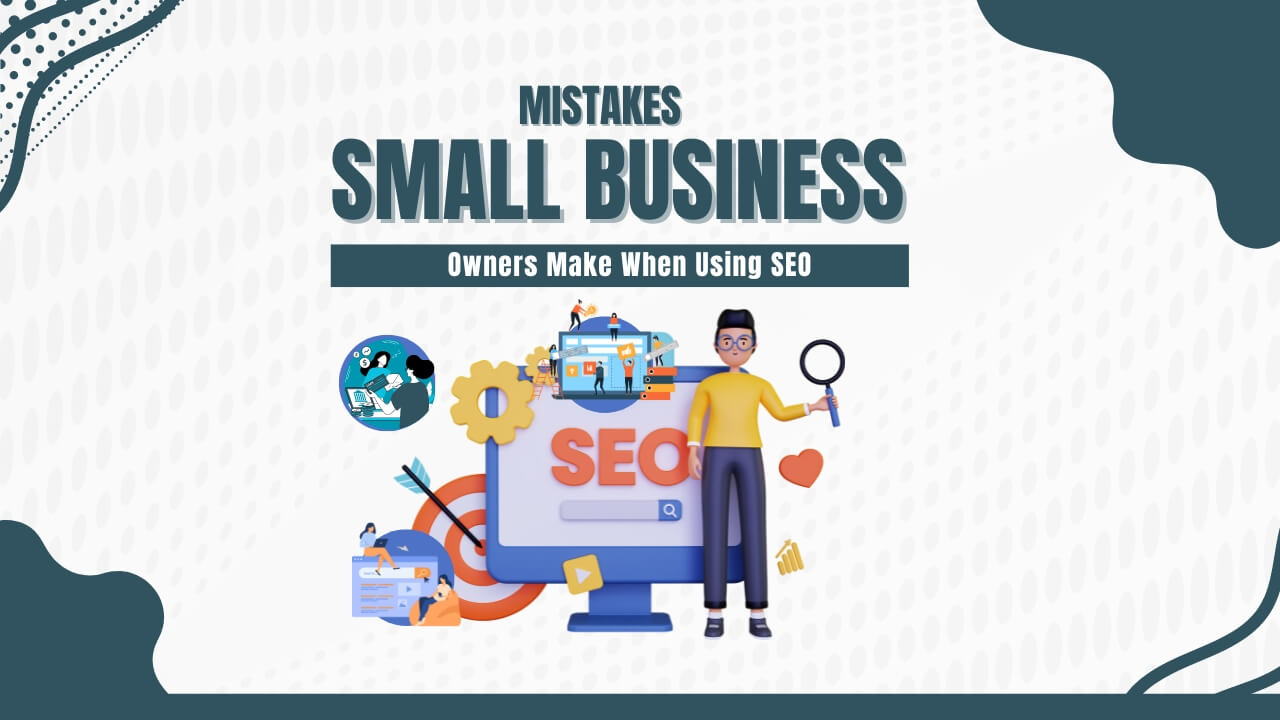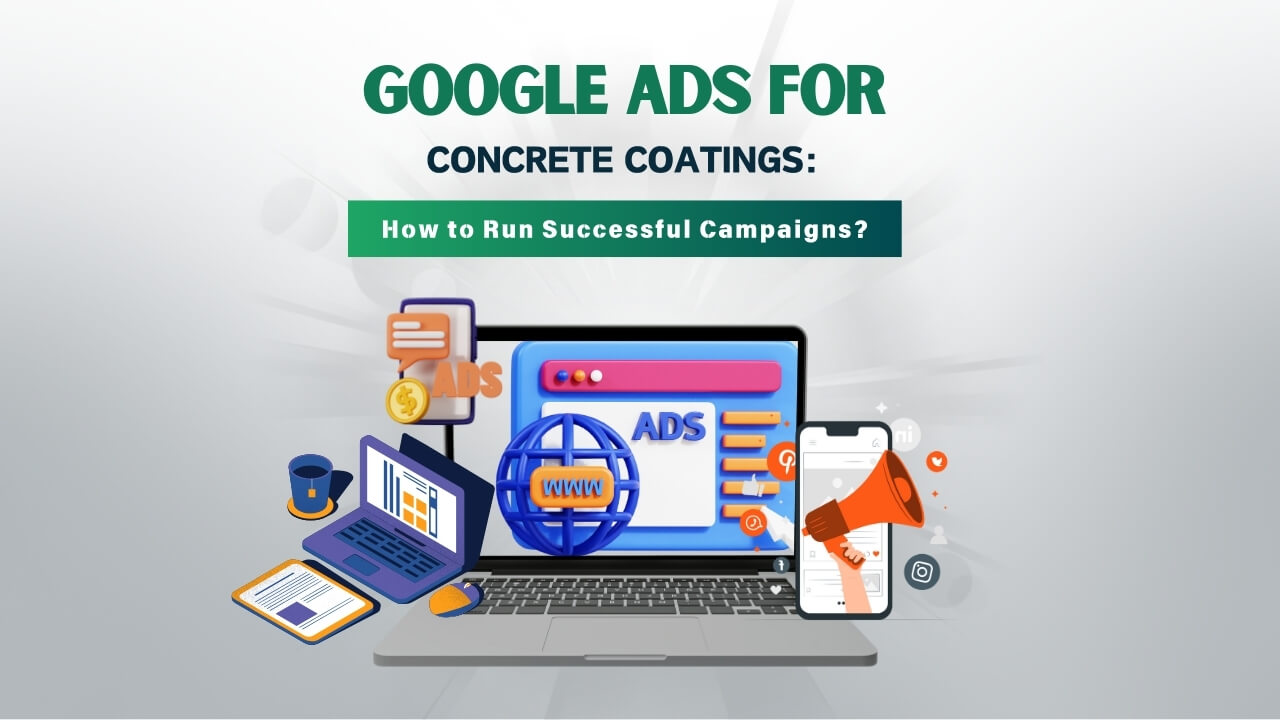In the ever growing era of digital marketing, the use of social media has been revolutionized ultimately resulting in attracting and engaging more and more consumers towards the business.
This transformation has ultimately led to the emergence of numerous advertising platforms, each offering various benefits and challenges. Among all these platforms being available in the market Instagram Ads and Google Ads are two of the most leading social media competitors.
Well the main aim of this blog is to dissect the nuances of Instagram Ads and Google Ads, by providing an in-depth comparison to help businesses to make an informed decision which one to be preferred the most.
Choosing the right advertising platform is very important as it can be a strategic move that can significantly impact the businesses to reach to the higher path.
Instagram, with its visually engaging content can effectively capture the interest of interested audiences, offering unique opportunities for brands to connect with the young generation or you can say Gen Z.
On the other hand, Google Ads, with its wide range of network and intent-based search queries, provides immense visibility or reach all over the internet. This dynamic between visual engagement and search-based intent is at the heart of the decision-making process for advertisers.
The importance of this choice cannot be overstated. Choosing the right platform will help you to easily convey your brand’s message properly, resulting in higher engagement, and driving more and more conversion, while the wrong choice can lead to waste of overall budget and opportunities.
Further in this blog we will be looking into the specifics of Instagram Ads and Google Ads, we will explore each of its functionalities, advantages, disadvantages, and best use cases.
By properly understanding the strengths and limitations of each platform, businesses can effectively tailor their advertising strategies to perfectly align with their goals, whether the main aim is to increase brand awareness, to drive more and more sales, or foster customer loyalty.
In the further section, we will be effectively looking into the inctrices of Instagram Ads and Google Ads, providing a perfect roadmap for businesses to make the best decision. The journey through the digital advertising landscape begins with a deep dive into the world of Instagram Ads.
Understanding Instagram Ads
Overview of Instagram Ads
Instagram as you know is the ultimate support for the social media realm, reaching over a billions of active users.
Its main essence lies in storytelling through visual and engaging contents, making it one of the ideal platforms for brands to effectively showcase their brand importance.
As Sujit Shukla Emphasis Instagram Ads main strength lies in its visual nature delivering compelling and advertising experiences directly into the hands of a diverse and engaged audience.
Target Audience and Demographics
The ultimate strength of instagram is that it can easily attract the younger generation like Millennials and Generation Z, who constitute the majority of the instagram audience, creating a vibrant community eager to engage with content that resonates with their values and interests.
Instagram’s sophisticated targeting options allow advertisers to delve deep into this demographic, effectively reaching potential customers based on their interest, behavior and the connection with their brand.
Types of Instagram Ads
Instagram do offers a wide range of ad formats, each can effectively tailored based on the different goals and user experiences:
- Stories Ads: These are basically full screen vertical ads which mainly appear between users’ Stories, offering a captivating canvas for short, impactful messages.
- Feed Ads: These Ads are integrated smoothly into the user’s scrolling experience, Feed Ads mainly resembling the standard post but are mainly marked as “Sponsored” Post.
- Explore Ads: Positioned in the Explore tab, these ads reach users as they seek out new content aligned with their interests.
Advantages and Limitations
The visual-centric approach of Instagram Ads can act as a double edge sword. It does provide a powerful medium for brand storytelling and engagement, particularly for businesses which are mainly into the field of fashion, beauty, lifestyle, and other visually-oriented sectors.
However, this reliance on imagery and video might not suit some of the specific industries, especially for those industries that rely more heavily on detailed information or direct responses.
Instagram’s platform is particularly designed for higher engagement, offering brands the tools to create immersive experiences that can easily attract the audience.
Features like shoppable posts, interactive Story stickers, and IGTV for longer videos empower businesses to innovate in their advertising strategies.
Despite these advantages, the platform mainly focuses on younger demographics and visual content. This might sometimes result in its effectiveness for certain businesses or campaigns that are targeting older audiences or more niche marketing.
As we move further, it is very important to keep in mind that Instagram’s main strength lies in its ability to connect brands with the consumer relationships through the ultimate power of storytelling. For businesses that mainly focus on creativity and emotional connection, Instagram Ads can be an unparalleled opportunity to engage with their audience on a deeply personal level.
Understanding Google Ads
Overview of Google Ads
Google Ads, the ultimate advertising powerhouse also known as Google AdWords, mainly stands as the ultimate cornerstone of the the Digital Advertising.
It mainly presents businesses with a robust platform which ultimately helps to increase their visibility of the Googles Wide range of network, which mainly includes Google’s search engine results pages (SERPs), a multitude of websites, and even videos on YouTube.
Google Ads is mainly known for its wide range of reach and its various ad formats, Google Ads also provides various opportunities for the business to effectively connect with the potential customers, regardless of where they are in the buyer’s journey.
As Google Ads do also compromise the relevancy, ads are primarily displayed based on the search queries or the content being consumed by the user, ensuring that the ads are reaching the relevant audience.
This level of targeting precision, combined with the platform’s extensive reach, makes Google Ads as one of the versatile tools for businesses mainly aiming to drive traffic, generate leads, or boost their online sales.
Target Audience and Reach
One of the most compelling attributes of Google Ads is its ability to reach a wider demographic. By tapping into users actively searching for products, services, or information, Google Ads allows businesses to effectively connect their potential customers..
Unlike other platforms that cater primarily to specific demographics, Google Ad mainly comprises a diverse range of audience, from young adults conducting research for their next purchase to professionals seeking services for their businesses.
This extensive reach is then amplified with the Google algorithm, which ultimately matches the ads with users based on their search history, online behavior, and content preferences. As a result, ads are not just widespread but also targeted, reaching the users who are mainly interested into you offerings.
Types of Google Ads
Google Ads does distinguish itself with a variety of ad formats mainly designed to meet different marketing objectives and to effectively cater the user experience:
- Search Ads: These are text-based ads mainly appears on Google’s SERPs, positioned above or below the organic search results. They are mainly triggered by keywords which are being searched by the users, allowing businesses to reach users at the moments when they are searching for related products or services. Search Ads mainly helps to capture the high-intent traffic, offering immediate visibility to potential customers who are actively seeking for the solution.
- Display Ads: Display Ads mainly appear on the websites within the Google Display Network (GDN), it has a collection of over two million websites that reach over 90% of Internet users worldwide. These visual Ads can be in various forms like images, banners, or rich media which can be effectively placed on the relevant websites, attracting user attention as they browse. Display Ads are excellent for building brand awareness and also to re-engage the visitors who had previously once visited your website.
- YouTube Ads: Leveraging the world’s second-largest search engine, YouTube Ads allow businesses to connect with their audience through video ads content. These ads can mainly appear before, during, or beside YouTube videos, offering a variety of formats from short bumper ads to longer, skippable videos. YouTube Ads combine the persuasive power of video with Google’s targeting capabilities, making them a powerful tool for brand storytelling and engagement.
Advantages and Limitations
Google Ads’ ultimate strength lies in its ability to connect the businesses with users who have a high purchase intent. By effectively targeting the individuals based on their search queries, Google Ads can effectively drive more and more traffic which can be more likely to be converted, offering an efficient pathway from discovery to purchase.
However, the platform’s sophistication comes with its challenges. Managing a Google Ads campaign does require immense knowledge of digital marketing principles, like keyword research, and analytics to optimize for the best results.
Furthermore, the competition of certain keywords means that businesses might sometimes end up in higher costs to maintain their visibility.
In essence, Google Ads also offers a powerful, flexible advertising solution with the potential for attaining better return of investment. Yet, its complexity and the competitive landscape of paid search advertising necessitate a strategic approach to campaign management and optimization.
As we progress, we will be looking into how these characteristics of Google Ads stack up against Instagram Ads, providing further insights of how to effectively choose the platform based on your business needs.
Comparative Analysis
The choice between Instagram Ads and Google Ads is not only about selecting an advertising platform; it is all about identifying the right tool that can effectively align with your marketing objectives, target audience, and industry.
This section mainly delves into the comparative analysis of both platforms across various dimensions, providing a clear understanding so that the audience can effectively make a clear decision.
Audience Targeting
- Instagram Ads do mainly excel in precision targeting, especially for demographics based on the age, gender and demographics. The platform’s integration with Facebook’s advertising system does also provide a rich dataset, making it ideal for brands mainly aiming to target their audience effectively.
- Google Ads also offers a broad range of approach to the audience targeting, mainly focusing on the user intent rather than demographics. By effectively targeting the keywords and by utilizing the targeting tools, Google Ads can easily cater a wide range of audience, from those who are in the initial stage and then ultimately setting the goals to ready to buy. This makes it effective for businesses mainly targeting a diverse range of age groups or those with products and services that can easily cater a broad range of audience.
Cost
- Instagram Ads comparatively have a lower CPC in certain industries, particularly for those industries which mainly depends on the visual content. However, the overall cost mainly depends on the competition of the audience and is also based on the quality of the ads.
- Google Ads on the other hand might be comparatively more expensive in terms of CPC, mainly for high competitive keywords. However, the platform often helps to get higher conversion rate because of its ability to target the users with the high purchase intent, overall giving a better return on investment (ROI) for businesses in competitive sectors.
ROI & Conversion Rates
- Instagram Ads helps to build brand awareness and engagement, which can indirectly lead to a positive conversion or lead. Direct response campaigns might be highly effective, especially with the visually compelling products and by setting a well defined target audience.
- Google Ads generally offers a high ROI and conversion rate, mainly for search Ads which are effectively targeting the high intent users. The platform’s ability to connect with users who are continuously seeking for the product and the services make it one of the essential tools for marketers to drive more and more sales and conversion.
Ad Formats and Flexibility
- Instagram Ads does allow to provide a wide range of visually compelling Ad formats, including Stories, Feed, and Explore ads, also allowing to create ads in a story telling format. This variety does support different campaign goals, from creating brand awareness to the conversion.
- Google Ads on the other hand does also cover a broad spectrum of ad formats, ranging from text-based search ads to visual display and video ads on YouTube. This utmost flexibility ensures that businesses can effectively tailor their ads based on the demographics, their customer journey, from awareness to decision-making.
Ease of Use
- Instagram Ads have the ultimate benefit of a user-friendly interface, especially for those who are also familiar with the facebook advertising platform. The learning curve is relatively gentle, making it accessible for all types of businesses.
- Google Ads does also offer powerful targeting and optimization options, but its utmost complexity and the sheer breadth of options might be daunting for beginners. It does require a deep understanding of PPC strategies and ongoing optimization to maximize the campaign performance effectively.
Suitability for Different Industries
- Instagram Ads are highly effective for lifestyle, fashion, beauty, and also other visual driven industries. The platform’s demographic skew and visual format helps to align properly with these sectors.
- Google Ads is highly versatile, to cater a wide range of audience ranging from service-based businesses to e-commerce industries. Its effectiveness is not only limited by visual appeal, but also suitable for industries having a high purchase intent.
Choosing the Right Platform for Your Business
The decision between Instagram Ads and Google Ads should be mainly based on the specific business goals, targeted audience, and industry nuances. Do Consider the following factors before choosing between instagram ads and Google Ads:
- Marketing Objectives: If brand awareness and engagement are your ultimate goal then instagram visual platform is a better choice to drive more and more direct sales or lead generation. Google’s intent-based targeting might give better results.
- Target Audience: Do consider where your audience is spending their most of the time and how they are engaging with the content. Younger demographics might be more engaged on Instagram, while a broader audience can be reached through Google Ads.
- Industry Suitability: Visual products or services tend to perform well on Instagram, whereas Google Ads does offer versatility to a wide range of audience.
- Budget and ROI Considerations: Also consider the cost-effectiveness of each platform for your specific industry and objectives. Do consider having a balanced approach in utilizing both platforms for different aspects of your marketing strategy which can be more worthy.
The choice between Instagram Ads and Google Ads is not binary. Many businesses might find success in leveraging both the platform strength to create an effective digital strategy.
The key is to remain adaptable, continuously test and optimize your campaigns, and align your advertising efforts with your overall marketing objectives and customer journey.
Conclusion
Navigating the digital advertising landscape requires a nuanced understanding of the tools and platforms at your disposal. Through our exploration of Instagram Ads and Google Ads, we’ve uncovered the unique strengths and challenges of each, offering insights into how businesses can leverage these platforms to achieve their marketing objectives. As we conclude, let’s revisit the key takeaways from our analysis and consider the broader implications for businesses in the digital age.
Key Takeaways:
- Audience Targeting: Instagram Ads offer precision targeting based on demographics, interests, and behaviors, making them ideal for engaging younger audiences with visual content. Google Ads, with its focus on search intent, casts a wider net, capturing a diverse range of users at various stages of the buying process.
- Cost and ROI: While costs can vary, Instagram Ads often provide a cost-effective solution for brand awareness and engagement, particularly in visually-driven industries. Google Ads, though potentially more costly due to competitive keywords, tend to deliver higher conversion rates and ROI for businesses targeting users with high purchase intent.
- Ad Formats and Flexibility: Instagram excels in delivering visually engaging content through a variety of formats, enhancing brand storytelling and engagement. Google Ads offers a broader spectrum of ad formats, from text-based search ads to visual display and video ads, catering to different aspects of the customer journey.
- Ease of Use and Industry Suitability: Instagram Ads are user-friendly and highly effective for lifestyle and consumer brands, while Google Ads require a deeper understanding of PPC strategies but are versatile across a wide range of industries.
Looking Forward:
The future of digital advertising is dynamic, shaped by technological advancements, changing consumer behaviors, and evolving business models. As platforms like Instagram and Google continue to innovate, businesses must stay informed and adaptable, ready to pivot their strategies in response to new opportunities and challenges.
Choosing between Instagram Ads and Google Ads—or integrating both into your marketing strategy—should be a decision grounded in your unique business needs, goals, and target audience. By aligning your advertising efforts with your overall marketing objectives, you can create compelling campaigns that resonate with your audience, drive engagement, and foster growth.
Embrace Flexibility and Continuous Learning:
The digital landscape is not static, and neither should be your advertising strategy. Embracing flexibility, experimenting with new approaches, and continuously optimizing your campaigns are key to navigating the complexities of digital marketing. Stay curious, stay informed, and leverage the strengths of each platform to craft a digital advertising strategy that propels your business forward in this ever-changing environment.
In closing, we encourage businesses to approach digital advertising with a strategic mindset, informed by the insights and comparisons presented in this blog. Whether through the visual storytelling capabilities of Instagram Ads or the intent-driven reach of Google Ads, there are myriad ways to connect with your audience and achieve your marketing objectives. The journey through digital advertising is one of discovery, innovation, and adaptation—embrace it with enthusiasm and an open mind.






